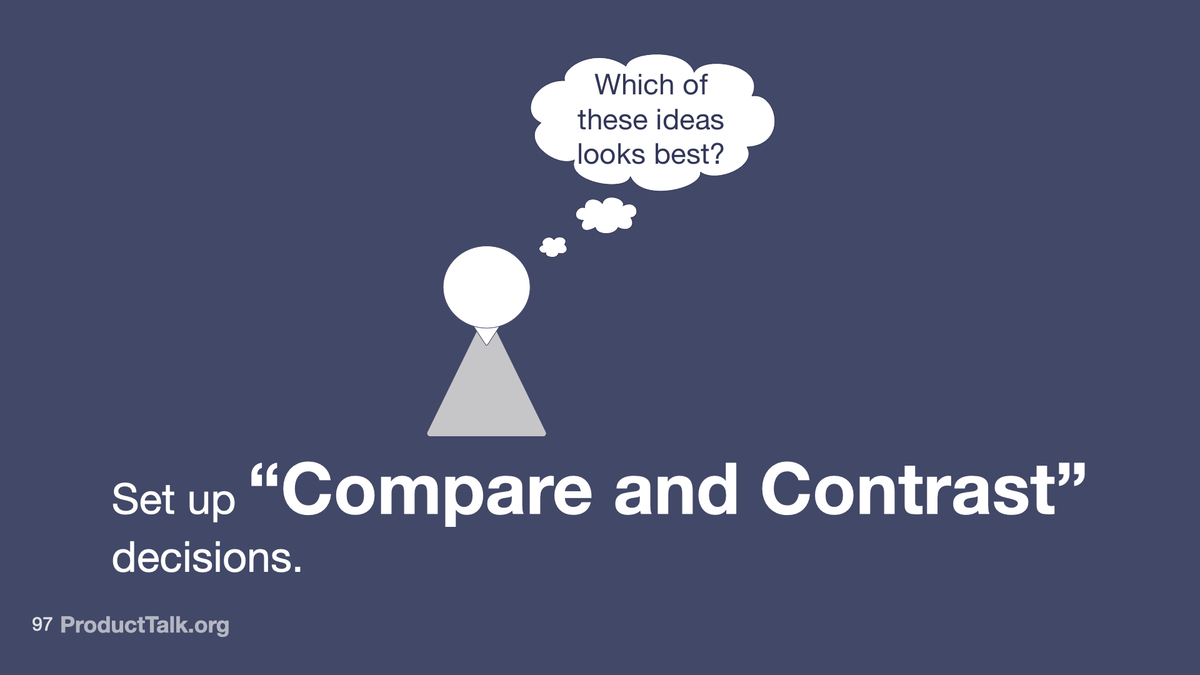Compare and Contrast Decisions

What are compare and contrast decisions?
Compare and contrast decisions ask "Which of these options looks best?" rather than "Is this idea good or not?"
How do compare and contrast decisions work in product discovery?
This approach treats "good" as the relative trait it is rather than an absolute trait, making decisions easier to answer and leading to better outcomes. When we consider multiple options, we make better decisions. We all know this intuitively—it's why we look at more than one house when choosing where to live.
At work, when we hear about an unmet customer need, we often jump to our first solution and ask "Could this idea work?" But we should instead consider multiple options and ask "Which of these solutions looks most promising?"
To set up a compare and contrast decision with solutions:
- Generate multiple solution ideas for a single opportunity
- Identify the key assumption that needs to be true for each idea to work
- Test those assumptions across multiple solutions
- Ask "Which looks best based on the data I'm collecting?"
The key to considering multiple options while moving quickly is to stop testing whole ideas and start testing underlying assumptions. Assumption testing allows teams to quickly evaluate which ideas might work and throw out the ideas that won't—without building complete products.
Learn more:
- How Compare and Contrast Decisions Lead to Better Product Outcomes
- Assumption Testing: Everything You Need to Know to Get Started
Related terms:
- Assumption Testing
- Assumptions
- Opportunity Solution Tree
- Whether or Not Decisions
Last Updated: October 25, 2025
